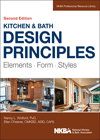When the American Institute of Architects and the U.S. Green Building Council jointly announced on May 28 their intent to form a strategic alliance, many in the industry wondered exactly what that meant. One question that arose: Is the AIA getting ready to endorse LEED? “No,” is the answer from both sides, although Peter Templeton, USGBC’s senior vice president for education and research, says he certainly would appreciate the association’s support. “Of course we would like AIA to recognize the value of LEED,” he says.
The announcement, which can be read on the AIA’s Web site, says the groups have agreed to collaborate in the areas of advocacy, education, and research, and have identified at least 10 possible collaborative projects. Scott Frank, AIA’s director of media relations, emphasizes that they intend to form a strategic alliance, not a partnership. He says nothing more definitive can be said until the AIA board reviews the proposed alliance, which it plans to do during its next meeting in September.
The announcement came three weeks after the AIA released its assessment of three green-building rating systems. As RECORD reported, the study was favorable toward LEED, citing it as “a good example of a rating system that provides a measurement of environmental achievement.” Frank says there’s no connection between the study and the proposed strategic alliance. “The two things shouldn’t be connected whatsoever,” he says. “They’re two separate ideas.”
The strategic alliance could mark an important step toward creating some synergy between the groups. While Templeton says they have had “a strong relationship” since the USGBC’s founding 15 years ago, the AIA has worked independently, for the most part, in developing green-building standards and goals. During a forum at the Greenbuild convention last fall, USGBC president Rick Fedrizzi questioned why AIA hasn’t endorsed LEED and asked the association “to tell us what’s wrong with LEED.”
Nadav Malin, vice president of BuildingGreen*, an information provider for the sustainable design community, conjectured that the announcement is ³fundamentally about restoring trust² between the groups. The disconnect at the national level, he says, has been odd, given that in many places, close collaboration is common and green practitioners are often members of both groups.
The prospect of closer ties is exciting to Bruce Fowle, FAIA, senior partner of FXFOWLE, who laments competition between the groups. “There are too many independent green organizations that aren’t necessarily working together,” he says. “What’s great about the USGBC is that it’s being universally adopted. You can have a conversation with practically anyone in the world about how green you want to be.” The USGBC is continuing to improve its system, Fowle says, “and for AIA not to get on that bandwagon would be very shortsighted.”
* BuildingGreen provides content for GreenSource, a sustainable design magazine that, like RECORD, is published by McGraw-Hill Construction.




Post a comment to this article
Report Abusive Comment